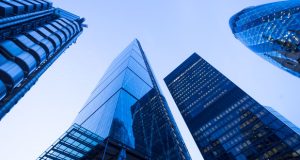JOINED UP APPROACH TO HVAC
Having a more joined up approach to both lighting and HVAC is something facilities managers can expect to see more. Heating and cooling system specialist Artus and commercial lighting manufacturer FUTURE Designs launched the Multi Service Unit (MSU) earlier this year. This purpose-designed multi-functional system gives those charged with running buildings the opportunity to offer a more sustainable and comfortable environment for their occupants. This chimes nicely with the ‘flight to quality’ argument currently being discussed in the office sector. Organisations are keen to fitout the workspace in their buildings with a high spec to help maintain their desired occupancy levels, support the move towards hybrid working, as well as attract and retain top talent. The MSU’s functionality is threefold: an advanced patented air conditioning system, intelligent lighting system and Class A acoustics. The advantages of consolidating traditionally separated services supports architectural integration with one point of contact, putting HVAC, lighting and acoustics into one to help reduce time and costs across all building phases with quantifiable energy, carbon (embodied and operational) and space savings. Because there is a reduction in packaging, mounting points and coordination, this also has a positive environmental impact.
THE RETURN OF THE TASK LIGHT
Giving employees more freedom in where they work in the post-pandemic office has several strands, all of which involves FM planning. Firstly, the location: if staff are working from home in a hybrid working set up, how much responsibility does the FM have for the WFH set up in terms of the correct levels of lighting, desk height etc? When the workforce is in the office are staff able to customise how they work? This is where we could see a return to the task lighting which, enables people to have more autonomy about how their workstations are lit, particularly for those that require better luminance.
Humanscale’s Nova, for instance, is designed to complement any work surface and enhance any workstyle. Its highly sculptural, striking form can be adapted to suit the requirements of the user, with the custom lens and LED array creating a uniform pool of glare-free light wherever needed. Nova is also ENERGY STAR®-certified, an internationally recognised mark of high efficiency.
LIGHTING HOME FROM HOME
While once office lighting was characterised by quite cold fluorescent strips, today things are quite different, particularly post-pandemic. Lighting in the workplace has evolved to give a much softer, more domestic feel, perfect for those more used to working at home. For instance the Aero 313 light fitting is designed specifically for the Marquette Building in Detroit. This building is the latest in a series of campuses BDG architecture + design has created for creative transformation company WPP.
These lights are manufactured from laser-cut aluminium, chosen for its lightweight properties, which is then powder-coated white. Around a continuous circle of LED lighting, there are three layers of fire-rated stretch fabric, coloured white on the underside so that light can diffuse and reflect. The mounted LED strip supports the internal back lighting of stretched fabric to provide diffused light across the face of the luminaire, which provides optimal illumination without unwanted glare. The large-scale luminaire, measuring 2235mm in diameter and 550mm deep, incorporates a number of practical requirements such as sprinklers, M+E systems, speakers and smoke detectors. In this way, the designers have found a creative, non-traditional way to approach the ceiling and acoustics budget. The journey from initial sketch by BDG to a fully functional office light manufactured by FUTURE Designs took place during the pandemic, with the first full prototype made in May 2020 and manufacturing beginning just a month later. The initial shipment was dispatched in October of that same year. FUTURE Designs also manufactured bespoke wooden crates to transport the luminaires, which are fully reusable with no pallets, card or shrink wrap packaging, to minimise weight and reduce any corresponding environmental impact. Upon arrival, the luminaires were craned into the windows of the Marquette Building. The Aero 313 has a simple three point install with pre-wired power lead for added ease of assembly.
As we evolve to a post-pandemic workplace, the FM community as well as real estate and HR teams will have to work hard together to provide office spaces that are more flexible and better able to deal with the ramifications of hybrid working. It’s clear to see lighting is a crucial part of this way forward for the workplace.





